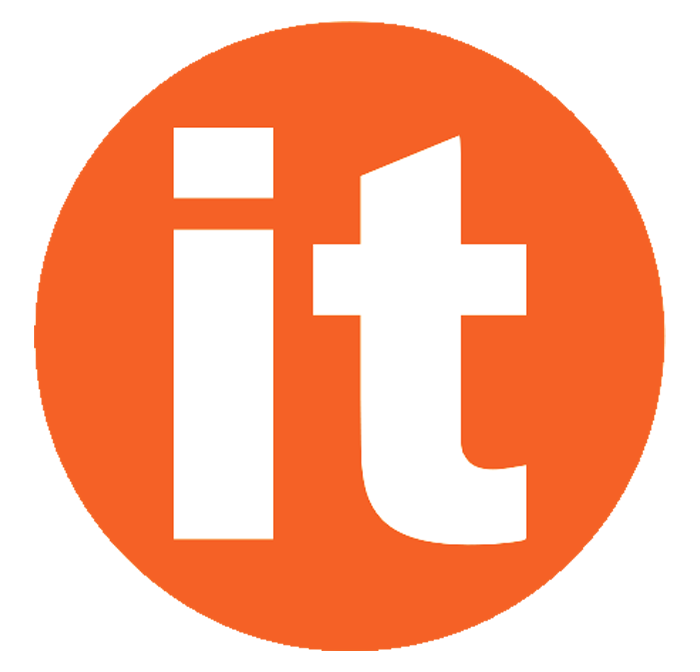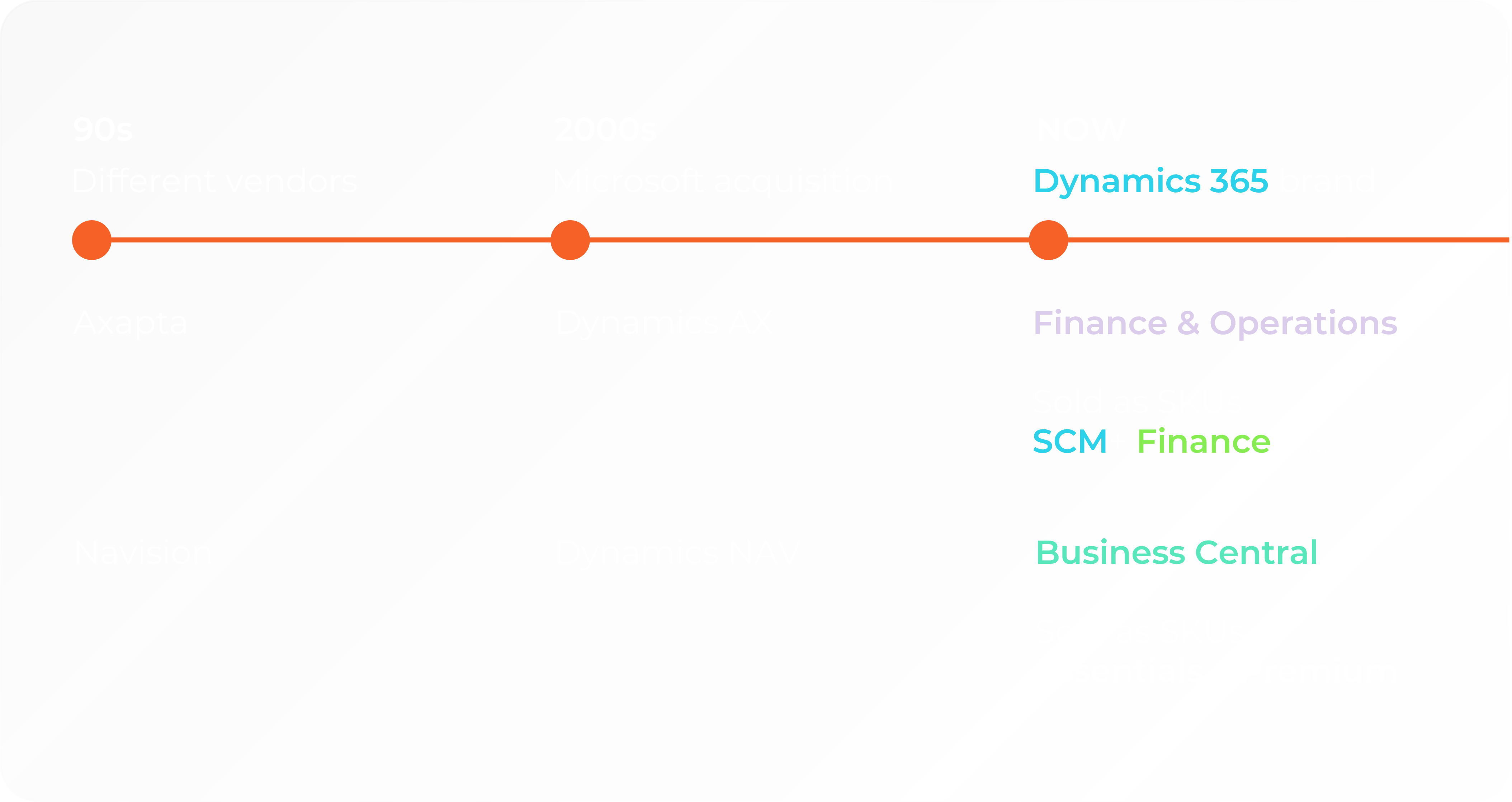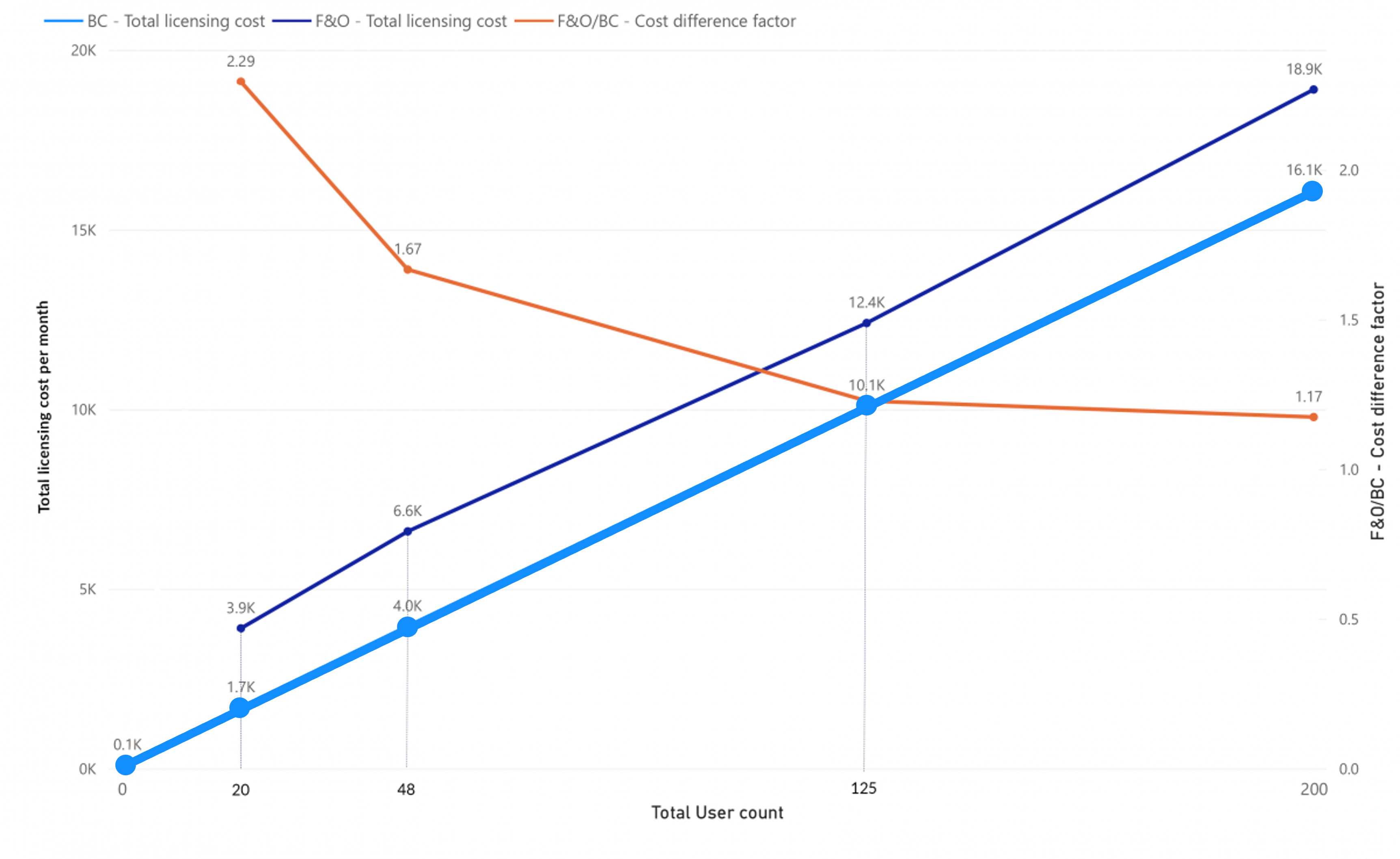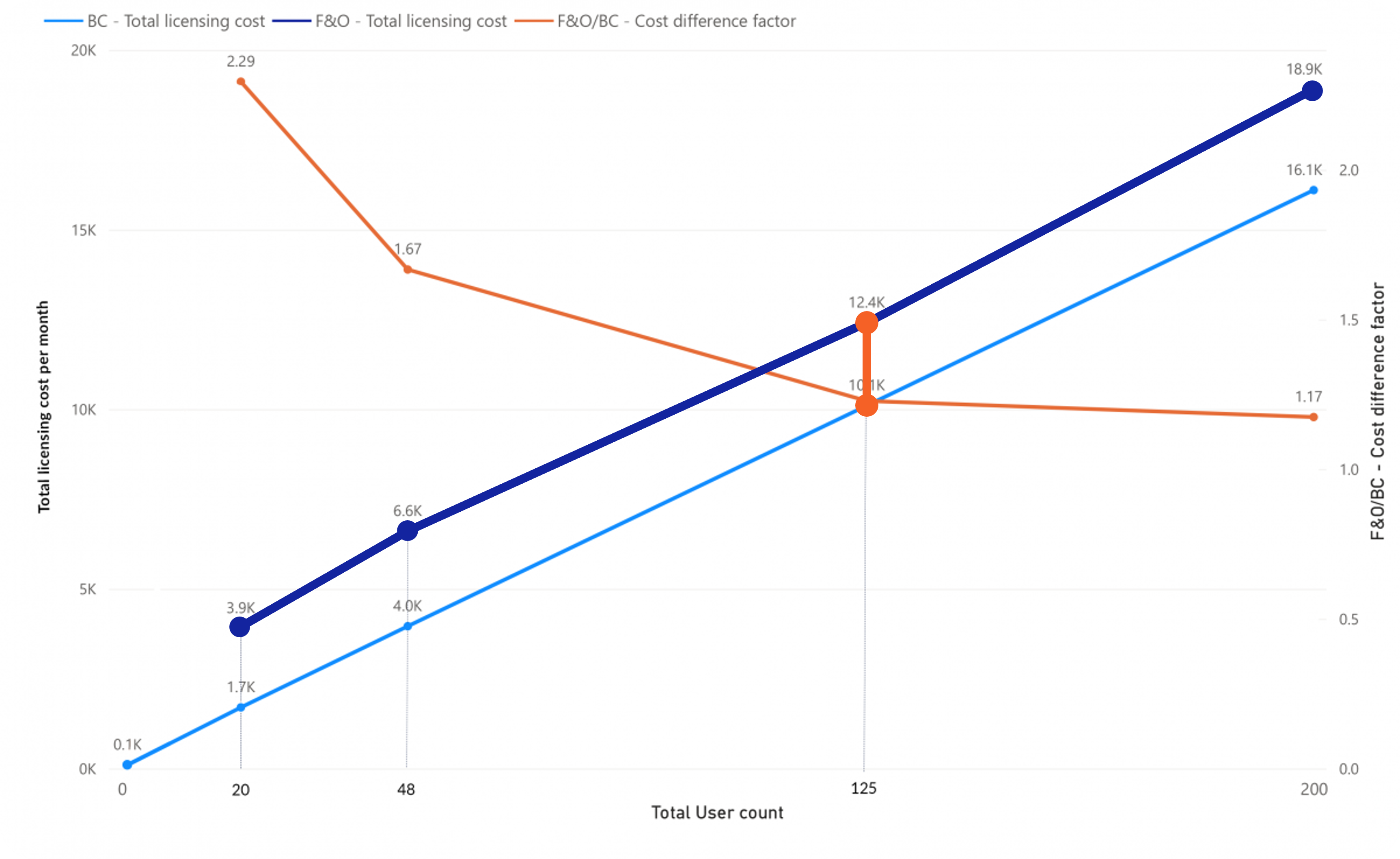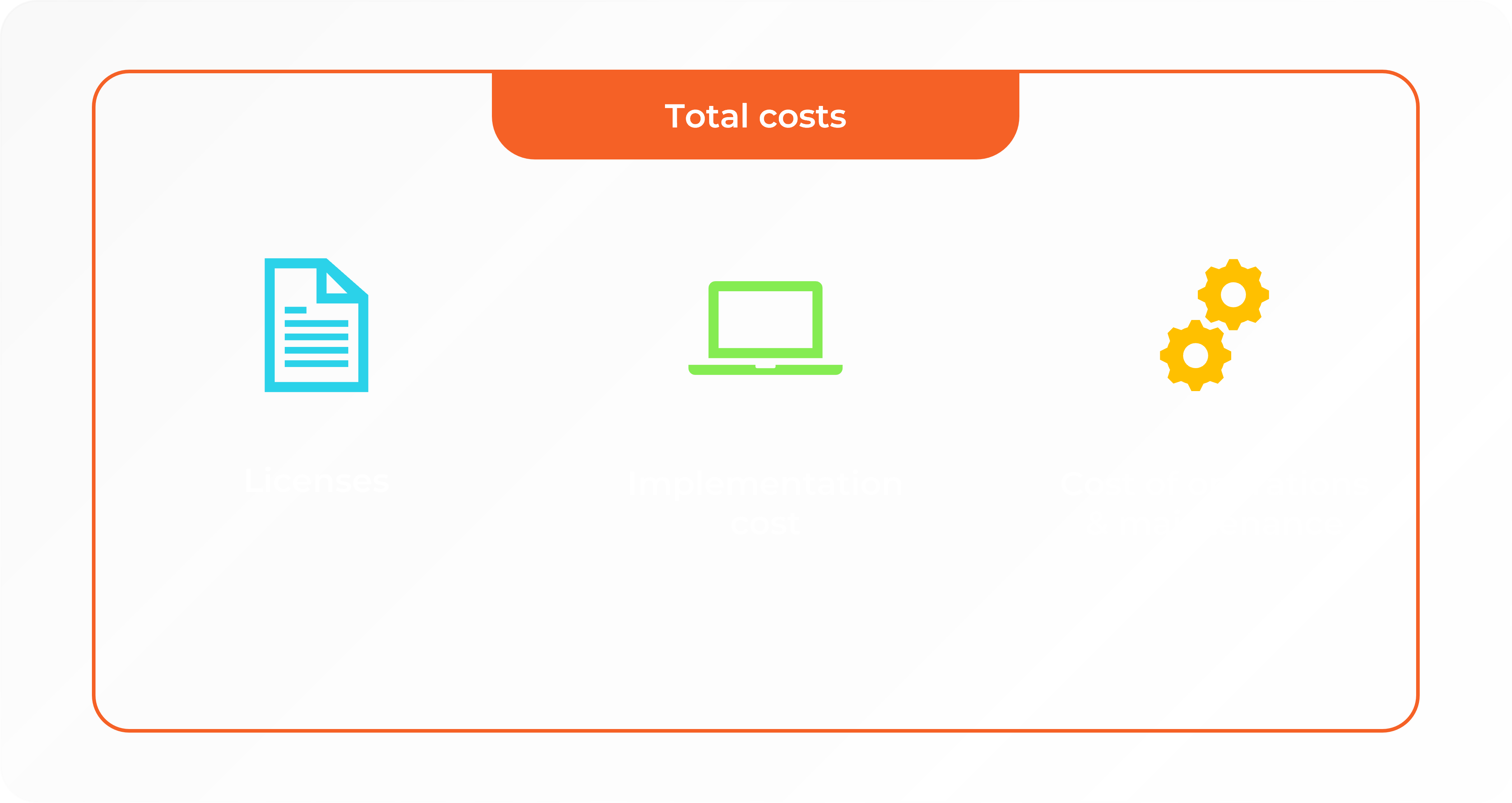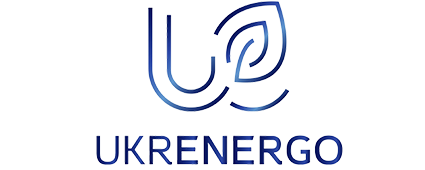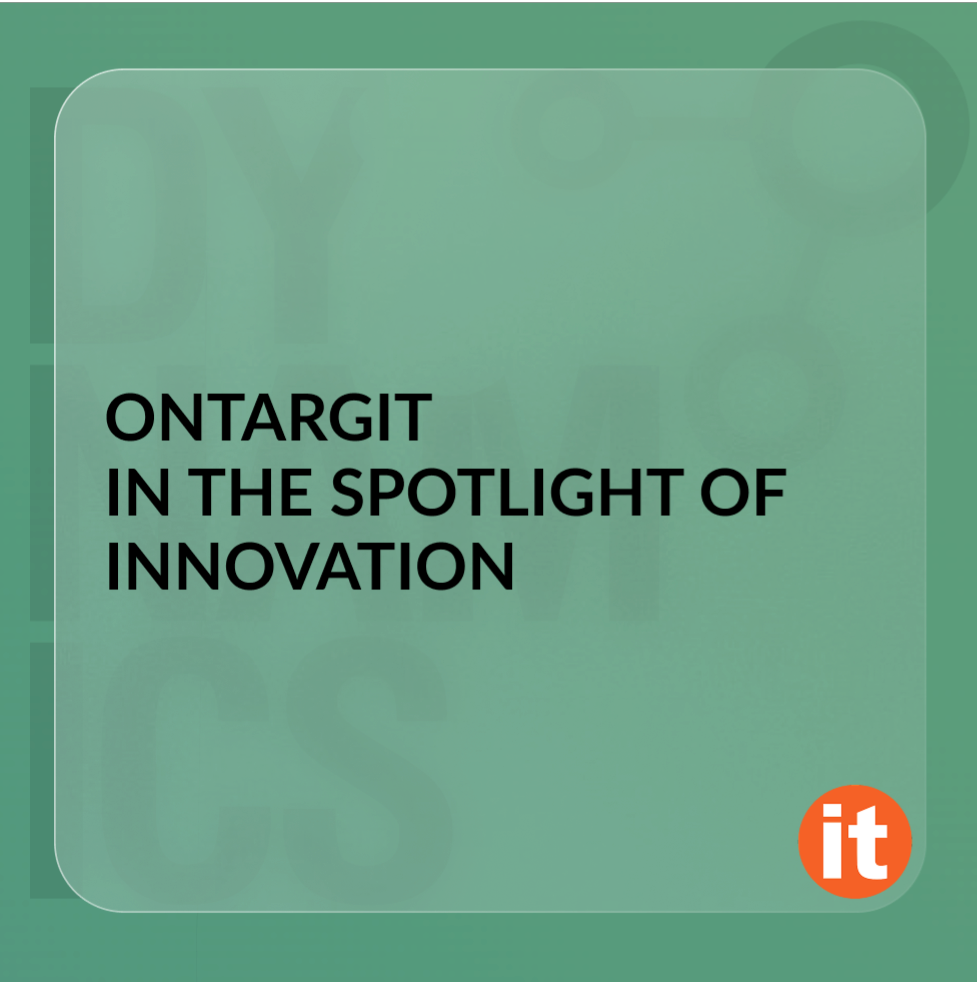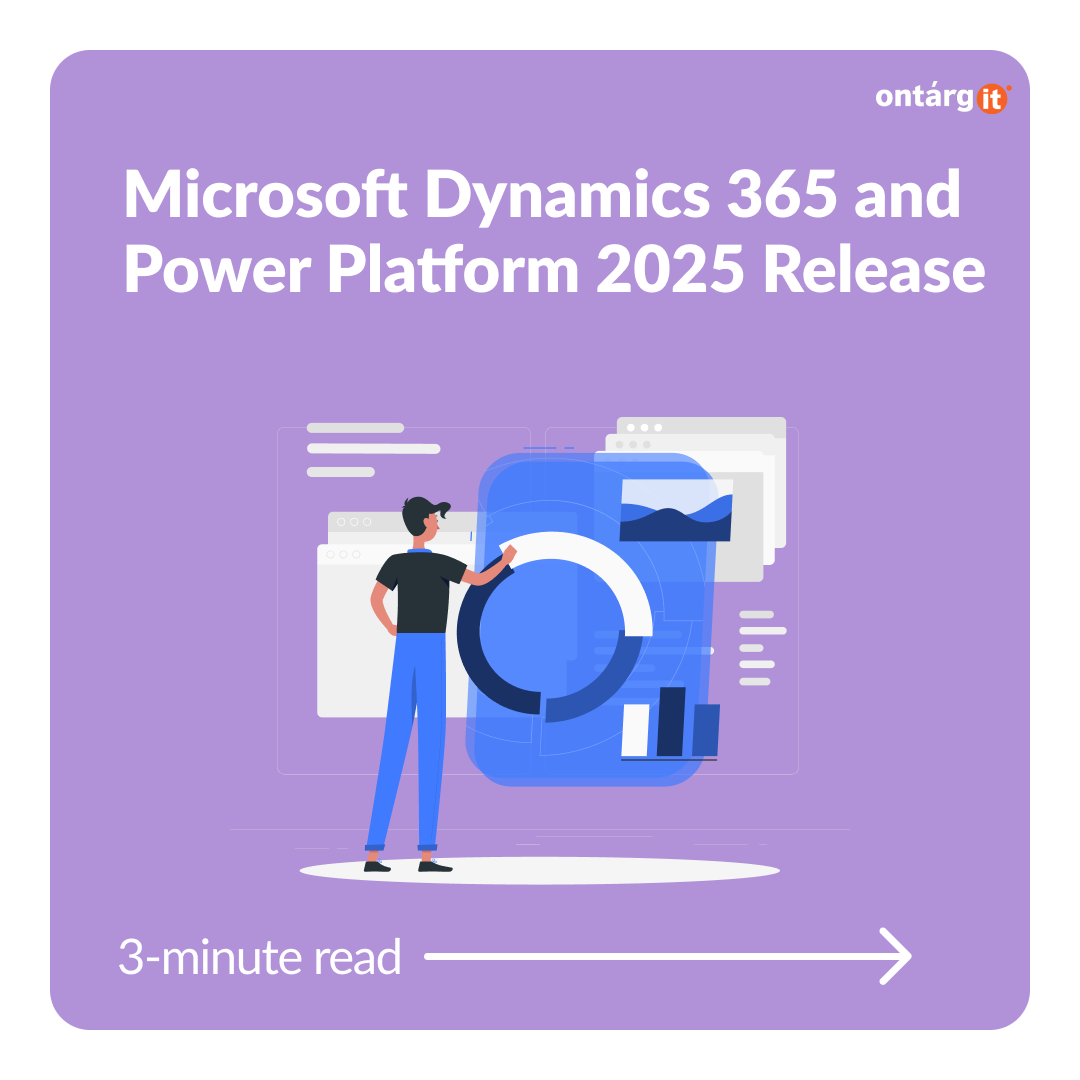Product name
In the late 90s, the world of ERP solutions was introduced to two unique products: Navision and Axapta. These were developed by different software vendors but both were acquired by Microsoft in 2002. Microsoft took a significant step by integrating all of its business applications, including both CRM and ERP, under the Dynamics 365 umbrella.
Once known as Axapta, Dynamics 365 Finance & Operations (F&O) has evolved into tailored licensing options like D365 SCM, D365 Finance, and D365 HR, becoming the market’s leading ERP offer. On the other hand, the Business Central platform, previously Navision, is sold in two licensing options – Essential and Premium.
Licensing cost: Business Central
In Business Central you can start with as little as one user license, with no minimum requirement. Essentials licenses are $70/user per month, and Premium licenses, including manufacturing functionality, are $100/user per month. For example, 10 Essentials and 10 Premium licenses for 20 users would total $1700/month.
Activity user licensing options are not available for user-based subscriptions in Business Central.
Licensing cost: Finance & Operations
Finance & Operations starts with a minimum of 20 full-user licenses, with costs ranging from $180-$210 per user, depending on features required. For 20 users needing both Supply Chain Management and Finance add-ons, the total comes to $3900/month.
While initially appearing twice as costly as BC, Finance & Operations offers “Activity user” licenses at $50 per user/month for team members performing specific roles. This option often reduces the price difference between the two platforms in real-world implementations.
Implementation cost
When considering implementing Dynamics 365 Finance & Operations or Dynamics 365 Business Central, the cost is mainly defined by the “scope” or specific processes you want to automate. Dynamics 365 Finance & Operations may have a larger scope due to its extensive features, thus affecting the cost. However, if the scope is similar, costs should align between both systems, possibly slightly less for F&O. Experienced Dynamics 365 consultants can tailor the system to your needs, with consulting rates influenced more by the company’s brand and industry experience than the product itself.
